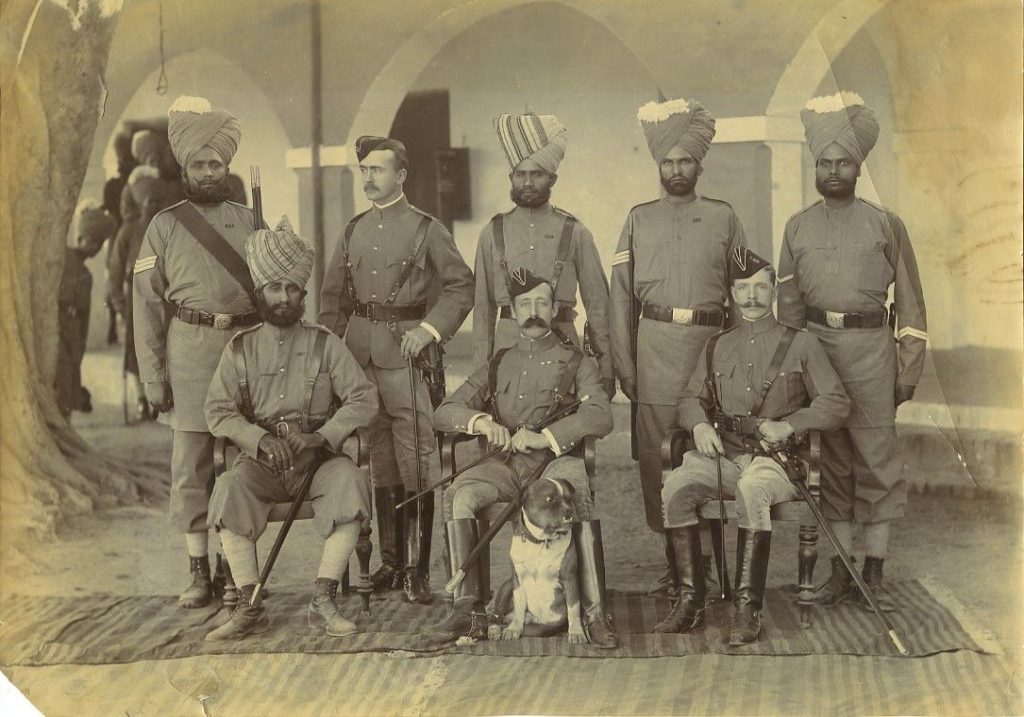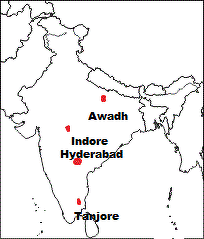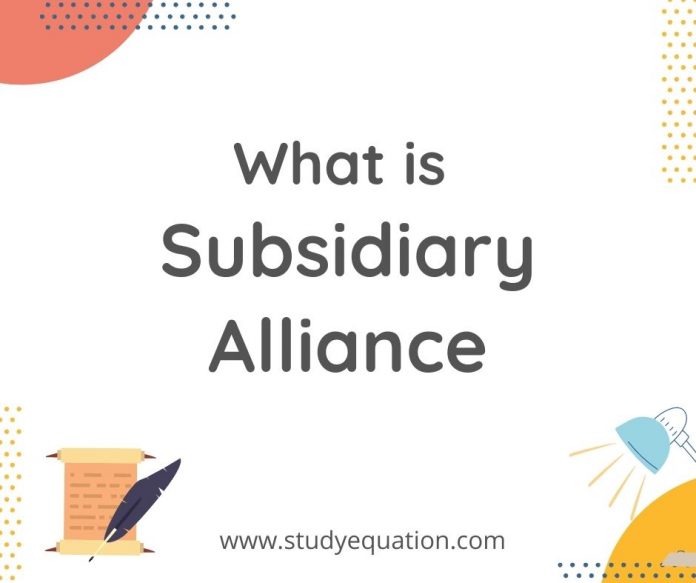Subsidiary Alliance was a treaty between the British East India Company and the Indian princely states, by virtue of which the Indian kingdoms lost their power to the English. Lord Wellesley formulated it. Subsidiary Alliance System helped the British to expand its rule in India.
Indian princely states who entered into this alliance with the British were not allowed to have their independent armed force. The company protected them but had to pay for the ‘subsidiary forces’ that the company was supposed to maintain for the purpose of this protection. The Company also controlled the foreign affairs of the state.
The subsidiary alliance is an important topic from The Modern History of India and conclusion of subsidiary alliance will also help you to score well in the UPSC Civil Services Exam. This abstract will also come in handy for other competitive exams like banking PO, SSC, IAS exams, etc.
We also provide Notes and Lesson Plan. Our Study Rankers specially made them for better understanding. Students can practice concepts with NCERT Solutions and Extra Questions and Answers. (latest CBSE curriculum). Shine among your friends after scoring high in Quiz, MCQ, and Worksheet.
Table of Contents
What is Subsidiary Alliance?
In 1798, Lord Wellesley came to India as the Governor-General. The subsidiary alliance was his policy. It aimed to bring the whole of India under British control. With the hope that it will solve the problem of ruling a nation that is under the rule of a king, he entered into treaties of subsidiary alliance with many Indian rulers.

Under this doctrine, Indian rulers under British protection surrendered the control of their foreign affairs to the British. Most dissolved their native armies. They started maintaining British troops within their states to protect them from attack. As British power grew, in most parts of India this became increasingly unlikely. The system also allowed the British to maintain their army at the expense of local rulers.
Subsidiary Alliance was a beneficial policy for the British. It kept the real power in the hands of the British.
Major Principles of The Subsidiary Alliance

- An Indian ruler entering into a subsidiary alliance with the British had to accept British forces in his territory.
- He would have to agree to pay for their maintenance.
- The ruler would accept the British people in his state.
- The ruler wouldn’t be allowed to form an alliance with any other power.
- He could not declare war against any power without the permission of the British.
- The ruler would not employ any Europeans other than the British. If he was already doing so, he would have to drop them.
- In case of a conflict with any other state, the decision will be in the hands of The British. And he would have to accept their solution.
- The ruler would acknowledge the East India Company as the supreme power in India.
- In return for accepting the treaty, the Company would protect the state from external dangers and internal conflicts.
- If the ruler failed to make the payments required by the alliance, then part of their territory would be taken away as a penalty.
Rulers Who Accepted The Doctrine
By the late 18th century, the power of the Maratha Empire had weakened and it was left with a number of states which were mostly small and weak. Hence, many rulers saw it profitable and accepted the offer of protection by Wellesley, as it gave them security against attack by their neighbours.
- After its defeat in the Battle of Buxar, the Kingdom of Awadh was the first to enter the alliance through the Treaty of Allahabad.
- Tipu Sultan of the Kingdom of Mysore was against it, but after its defeat in the Fourth Anglo-Mysore War, Mysore was forced to join the alliance.
- The Nizam of Hyderabad accepted a well-framed subsidiary alliance in 1798.
- After the Third Anglo-Maratha War, Maratha ruler Baji Rao II also accepted the subsidiary alliance.
- Other states which accepted this alliance were:
- Tanjore/Mysore (1799),
- Avadh (1801),
- Peshwa (1802),
- Bhonsle (1803),
- Scindhiya (1804)
- The Holkar State of Indore was the last Maratha confederation to accept the Subsidiary Alliance in 1818.

The Aftermath of The Subsidiary Alliance
Merits
- The British provided security to the Indian Rulers and protected them from their neighbors.
- According to a condition of the agreement, no ruler could make war without the consent of the British. Hence, most of the wars among them reduced.
- The British trained the local armies, therefore forming a more impressive Indian army.
- This doctrine gave the Indians the chance to unite as they felt really oppressed by their rule.
Also Read : One word substitution for English language
Demerits
- The subsidiary alliance deprived lakhs of soldiers and officers of their livelihood.
- The Indian rulers had to let go of their independence.
- As a result of the payment of maintaining the army, the Indian states gradually became poor.
- This led to the collapse of the administration, which gave the Company a reason to attach to the state.
- Many Indian rulers indulged themselves and neglected the welfare of their subjects.
- Due to a lack of practicing their authority, the Indian rulers became heavily demoralized and grew weaker.
- It deprived the people of their right to revolt against the misrule of their rulers.
Advantages of The Treaty that the British Enjoyed

- The British got a large sum of revenue from the subsidiary alliance.
- It led to an increase in power and resources.
- The cost of Indian money maintained the British Indian army.
- The rulers entering into subsidiary alliance accepted the British as the supreme authority.
- The chances of war reduced from the territories of the company.
- Other European powers were maintained outwardly.
- They acquired valuable territories as subsidiary payment.
- It led to the expansion of the British Empire in India.
Conclusion Of Subsidiary Alliance
Lord Wellesley planned the subsidiary alliance in India. According to this doctrine, an Indian ruler entering into The Subsidiary Alliance with the British had to dissolve his own armed forces and accept British forces in his territory. It turned out to be extremely advantageous to the British whereas it deprived Indian rulers of their power and independence.Conclusion of subsidiary alliance aids in comprehending Lord Wellesley’s primary motivation for implementing the subsidiary alliance system, which was to quickly and peacefully subjugate the Indian nations.
Browse StudyEquation for more scholarly articles like this!
Frequently Asked Questions
Q.1. How did the Subsidiary Alliance impact the economy?
A) Awadh and Wellesley have a Subsidiary Alliance in place. He was responsible for defending the nawab from both internal and external insurrections. The nawabs became complacent and careless with the state’s issues as a result.
Q.2. How did the British benefit by Subsidiary Alliance?
A) After his death, the British would take the state of a monarch without a son. By doing this, the British acquired parts of Burma as well as the Punjab, Jhansi, and Nagpur.
Q.3. What were the important terms and condition of the Subsidiary Alliance system?
A) The primary principles of a subsidiary alliance were as follows: An Indian monarch who entered into a subsidiary alliance with the British had to accept British forces within his realm, as well as accept British forces beyond his dominion.





